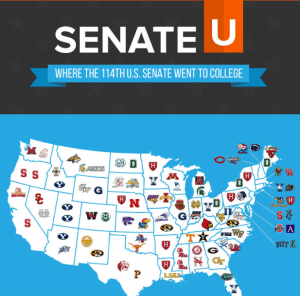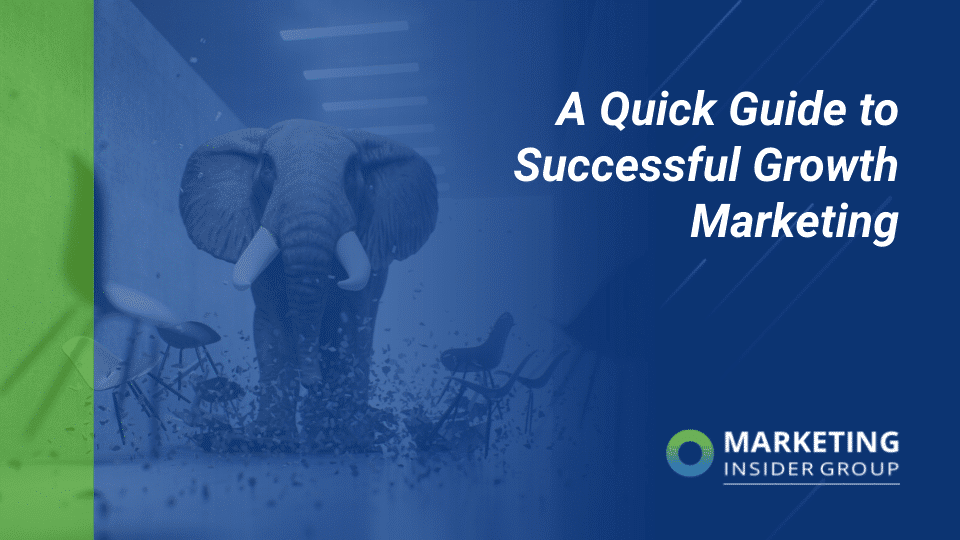
The Most Successful Content Marketing Case Studies I Know Of
Innovation and thinking outside the box are essential to great content marketing, but there’s no need to reinvent the wheel every time.
Studying successful content marketing case studies can give you insight into techniques that work and inspire you with their creative insight.
Here’s some of the most successful content marketing case studies I have ever seen, with some lessons for all of us . . .
Quick Takeaways
- There’s a lot to learn from studying the most successful content marketing case studies.
- It’s not always easy to get executive buy-in for content marketing.
- You can usually prove the content marketing business case with a small budget and a limited timeframe.
- Content creates real connection between brands and customers.
Capgemini Uses Storytelling to Build Connection
The Challenge:
Consulting company Capgemini had a problem. Brand awareness was low and the reputations of their consultants needed a serious boost. Despite working with some of the world’s top brands like KPMG, Deloitte, and Accenture, revenue growth was slow and the company was falling behind its competitors.
Capgemini executives were convinced the answer was to invest in paid advertising in golf magazines and airports, and even to sponsor a professional golfer. They had seen competitors carry out this strategy with apparent success.
The Content Strategy:
Digital advertising and brand campaign manager Rena Patel had tried this type of expensive marketing before and seen disappointing results. Rena knew the brand wasn’t engaging with its audience and that the proposed strategy would not resonate with its customers. They weren’t interested in golf and didn’t even know the names of the famous golfers the executives wanted to sponsor.
Instead, Rena mapped out a content marketing plan that would engage Capgemini with its target audience at a much lower budget. She set a goal to attract nearly one million new website visitors and put her own reputation on the line by taking full responsibility for the strategy.
Rena’s content marketing strategy for Capgemini revolved around a storytelling website. This site answered real questions and challenges customers had around topics like big data and the cloud.
The Results:
After one year, the site achieved Rena’s original goal of delivering nearly one million new visitors to the brand website. It also attracted more than 100,000 new followers to their LinkedIn page and 1.8 million content shares. The strategy generated nearly $1 million in sales in its first year and an even more impressive $5 million in its second year. It is now estimated that the content marketing program pioneered by Rena is bringing in a staggering $20 million per year.
The Takeaway:
A big budget doesn’t compensate for a lack of connection with your customers. Always focus first on how you can resonate with your audience (hint: content marketing is the way to do it), then direct your resources to a strategy that can accomplish that goal.
You can read more about Rena’s content marketing strategy for Capgemini in the book Mean People Suck.
College Raptor Gets Big Publicity with Strong Visuals
The Challenge:
College Raptor was a startup that had just raised a Series A funding round for their technology matching high school students with the right college. They were looking for creative ways to make it scale.
The Content Strategy:
College Raptor implemented a three-prong content marketing strategy. First, they focused on creating evergreen content about topics their target audience would always be searching for, such as “What is a good ACT score?”
Second, they created content that may not check all of the SEO boxes but would be more likely to go viral on social media, building brand awareness and visibility.
Finally, College Raptor developed pieces specifically geared toward link building, or increasing the number of inbound links to a webpage or piece of content.
Over time the College Raptor team created tons of dynamic content, including infographics like the one below which shows where every member of the 114th U.S. senate went to college. This one hit the mark in a big way — it was shared by The Washington Post.

They also launched a “Hidden Gems” series featuring high-quality colleges that may not appear on traditional “top colleges” lists for one reason or another. The colleges on these lists shared the articles, and College Raptor saw a huge spike in organic traffic from the series (250K visitors in one week).
The Results:
College Raptor generated over one million website visitors in one year, with over 100,000 organic sessions per month. Their creative combination of content that covered evergreen topics and highly shareable pieces contributed to this huge growth and established their brand reputation.
The Takeaway:
Creating highly shareable content not only makes it more interesting, but allows you to leverage your target audience and other brands to gain visibility and increase traffic.
Cleveland Clinic Taps into Human Emotion
The Challenge:
Cleveland Clinic is dedicated to its core value: Patients First. The clinic wanted every one of its 40,000 employees (who it calls “caregivers”) to fully embrace and embody this value in their work.
The Content Strategy:
Cleveland Clinic’s in-house media production team and Patient Experience office created a video entitled Empathy: The Human Connection to Patient Care.
This video poses the question, “If you could stand in someone else’s shoes, would you treat them differently?” This was achieved through a series of emotional vignettes exploring the stories of a varied set of characters including a young girl visiting her father for the final time, a woman who just received a devastating diagnosis, and a family with a 19-year-old son on life support.
The video was originally intended for internal content marketing purposes only, but the content marketing team quickly realized the potential value of releasing it publicly. They posted it across several social media channels and on Cleveland Clinic’s own blog, Health Essentials.
The Results:
The video achieved amazing success internally and went viral after it was shared on the blog, circulating in the healthcare field and beyond. It has since amassed nearly six million views on YouTube alone.
The Health Essentials blog also achieved massive growth and is now the most visited hospital blog in the US, with over six million people visiting each month. The blog sets out to answer a wide range of health questions including “Is there really such a thing as a broken heart?” and “What does the color of your urine say about you?”
The Takeaway:
The Cleveland Clinic blog is a great example of why knowing your audience and their needs is critical to content marketing success. The blog now generates enough income to cover the costs of their content production and to support the brand’s mission of providing top-quality care and education.
You can read more about Amanda and her content marketing strategy in the book Mean People Suck.
Blendtec Makes a “Boring” Product Fun
The Challenge:
Blendtec, a seller of commercial and residential blenders, wanted to implement a content marketing strategy that would increase visibility and sales. The thing was, blenders weren’t the most exciting product. They needed to think of a unique way to create content about their product that their audience would want to consume.
The Content Strategy:
Blendtec took a risk. They launched the “Will it Blend?” video series featuring company founder Tom Dickson blending non-edible items not intended for the blender — everything from glowsticks to lighters to iPhones and iPads. The series was intentionally outlandish, meant to inject humor into a product line that’s decidedly boring (for most people — nothing against you kitchen appliance enthusiasts).
The video series was an immediate hit, and today the “Will it Blend?” series has featured more than 180 videos over its 12-year span.
The Results:
The “Will it Blend?” series created a huge new following for Blendtec and a 700% increase in sales over its first three years. The Blendtec YouTube channel now has more than 860K followers and the “Will it Blend?” series has its own place in pop culture, even earning an entry in the Internet Movie Database.
The Takeaway:
Every kind of company can get creative with their content strategy! Don’t assume that a traditional industry or product line is a barrier to good content. The Blendtec story also teaches us that unique content can be a risk, but when successful it can reap big rewards.
SAP Inspires with Customer Stories
The Challenge:
In 2011, SAP’s Co-CEO at the time, Bill McDermott, realized that the inspiring stories of innovation from SAP’s customers didn’t appear anywhere on the brand website. Instead, it included only product information.
Bill realized SAP was missing out on a big opportunity to engage its customers and prospects through inspiring content. Bill tasked me as Vice President of Content Marketing and Content Strategy with the challenge of changing how the brand spoke to its digital audience, moving from a product-centric approach to a customer-centric approach.
The Content Strategy:
I implemented a radically new strategy by launching SAP’s first content marketing site, SAP Business Innovation, with the objective of engaging with early-stage prospects through quality content. I went on to identify what I’ve now documented as The Content Formula — a combination of building the business case, finding the budget, and demonstrating the ROI.
After investigating web search data, I found that there was no content to satisfy non-product searches such as “big data.” By having no content to address the questions of early-stage prospects, SAP was missing out on capturing these potential customers. Thus, the business case was proven.
There was little to no budget available for this new content marketing strategy, but I realized the brand was spending a significant amount of money each year on advertising with less than impressive results. I proposed that the advertising team give up half their budget so that we could build a dynamic content marketing platform to replace the original landing pages.
The Results:
After a year of publishing thousands of articles on the platform, it had not only saved the advertising team half their budget for years to come, but it had also generated over 1000 leads equating to $750,000 in revenue, and 7x ROI.
The Takeaway:
Like with Capgemini, SAP’s big budget couldn’t solve their problem — they needed to connect with their customer first. An additional takeaway here is that content about existing customers (like SAP’s stories of innovation) is highly engaging and builds social proof, one of the best ways to convert leads.
Ready to get more traffic to your site with quality content that’s consistently published? Check out our Content Builder Service. Set up a quick consultation, and I’ll send you a free PDF version of my books. Get started today and generate more traffic and leads for your business.






